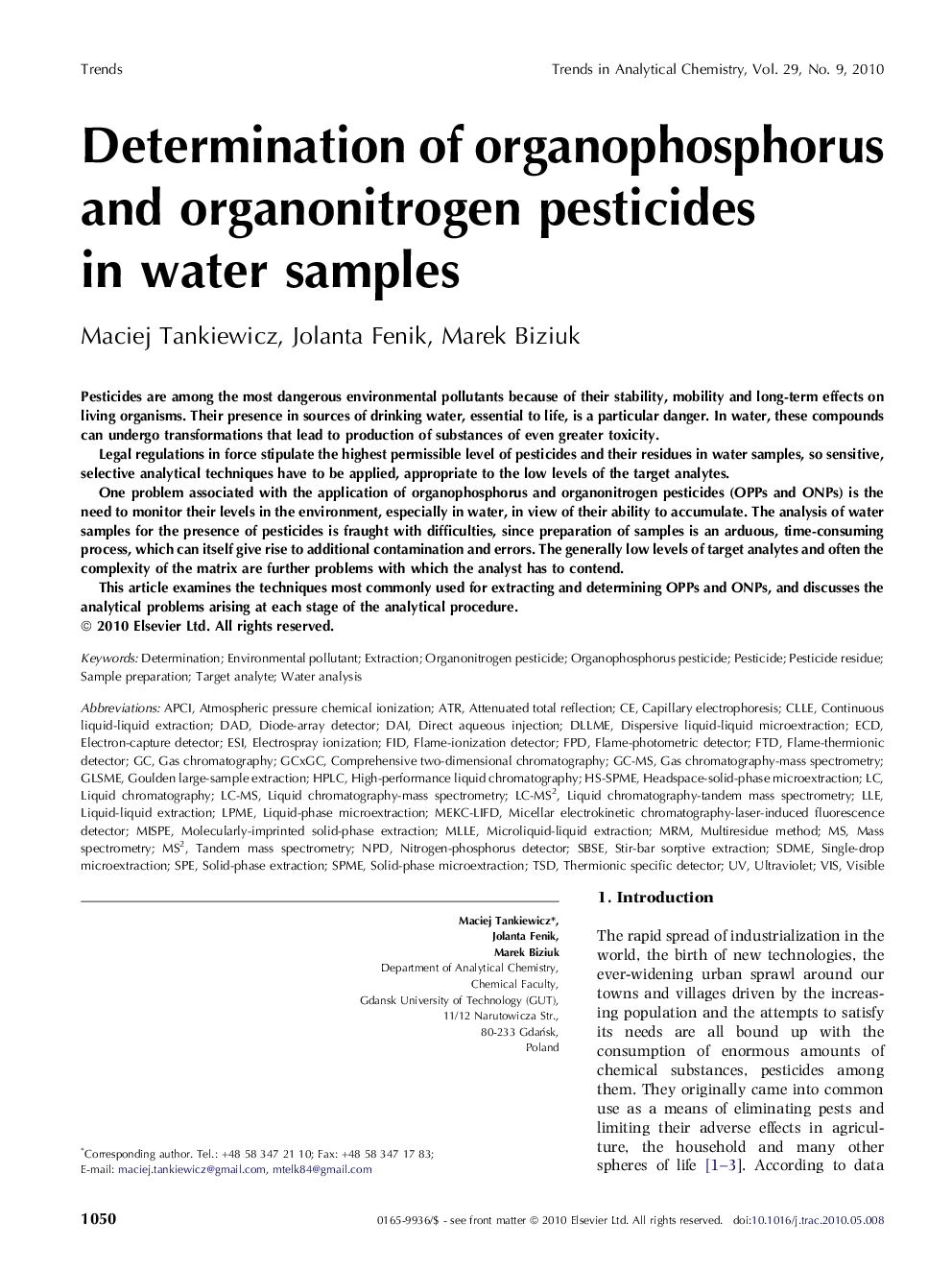| Article ID | Journal | Published Year | Pages | File Type |
|---|---|---|---|---|
| 1248312 | TrAC Trends in Analytical Chemistry | 2010 | 14 Pages |
Pesticides are among the most dangerous environmental pollutants because of their stability, mobility and long-term effects on living organisms. Their presence in sources of drinking water, essential to life, is a particular danger. In water, these compounds can undergo transformations that lead to production of substances of even greater toxicity.Legal regulations in force stipulate the highest permissible level of pesticides and their residues in water samples, so sensitive, selective analytical techniques have to be applied, appropriate to the low levels of the target analytes.One problem associated with the application of organophosphorus and organonitrogen pesticides (OPPs and ONPs) is the need to monitor their levels in the environment, especially in water, in view of their ability to accumulate. The analysis of water samples for the presence of pesticides is fraught with difficulties, since preparation of samples is an arduous, time-consuming process, which can itself give rise to additional contamination and errors. The generally low levels of target analytes and often the complexity of the matrix are further problems with which the analyst has to contend.This article examines the techniques most commonly used for extracting and determining OPPs and ONPs, and discusses the analytical problems arising at each stage of the analytical procedure.
